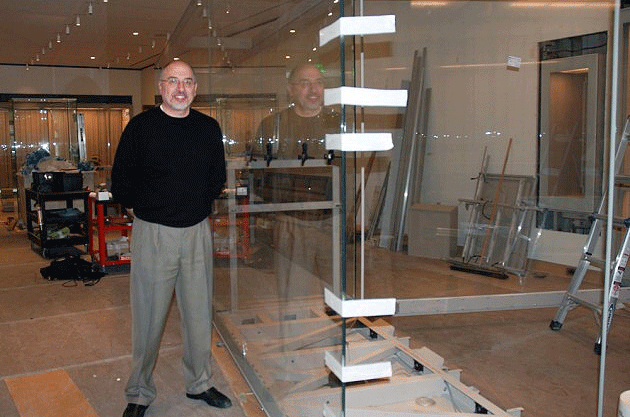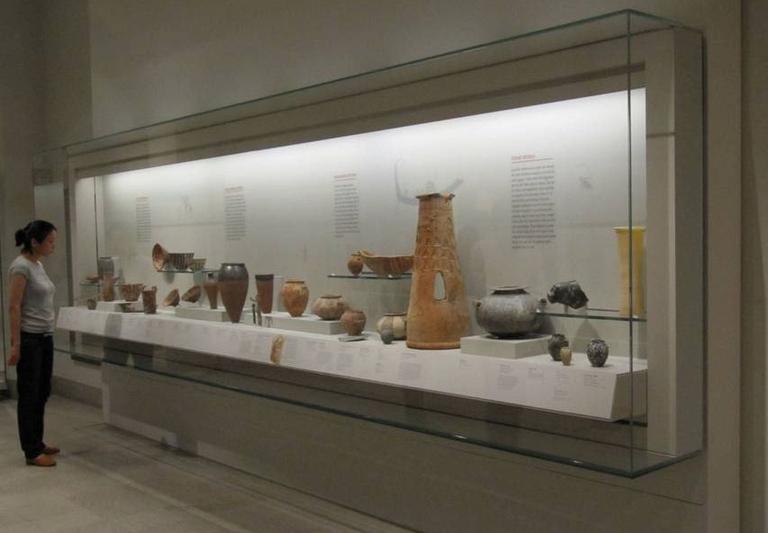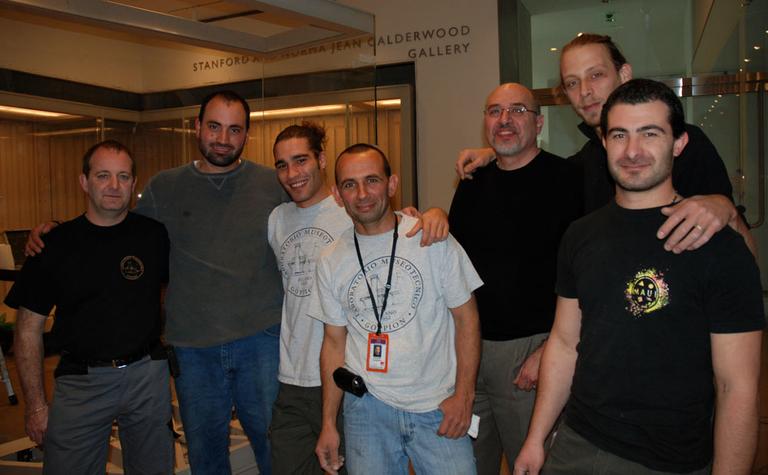Advertisement
Exquisite Disappearing Glass Cases At The MFA

As you walk through a museum you might not notice things like glass display cases. But they’re a critical part of the experience. And sometimes — as you'll see — they're made to pretty much disappear.
When the world's top museum need an exquisite box to house priceless treasures like the Mona Lisa or the Crown Jewels of England, they often go to the Milan, Italy-based Goppion Museum Workshop.
“They have a pretty good resume,” said Keith Crippen, with a laugh. “Their references are pretty good.”
Crippen is the head of design at the Museum of Fine Arts. A lot of time, thought and money went into the design and purchase of more than 200 state-of-the-art cases for the MFA's new Art of the Americas wing, which opens Nov. 20. Crippen said only six or seven companies in the world are capable of custom-manufacturing cases the caliber of Goppion. He wouldn’t divulge how much they cost.

”Yes, it's a pretty huge investment and we wanted to get the right person to do it who would actually be able to take all of our requirements,” Crippen explained. That meant crafting solutions “that could work for not only the Liberty Bowl by Paul Revere, but also pre-Columbian works and Calder jewelry.”
That "right" person is Allesandro Goppion, who not only works with art, but adores it as well.
“The Bowl of Revere is, of course, it’s fantastic,” Goppion said.
Goppion came to the U.S. from Italy recently to catch the final moments of installation at the MFA. Wearing a sage-colored sweater and an endearing smile, this passionate lover of art sees his company, and himself, as guardians of the planet's cultural heritage. He takes his responsibility to icons like the Mona Lisa seriously, but can still laugh about it.
”I hope that everything is going well,” he mused. “If not, as I used to say sometimes, 'Leonardo da Vinci made the Mona Lisa and I destroy it!' ”
Advertisement
Joking aside, Goppion’s philosophy behind his 60-year-old family business is firm.
”My attitude is to consider the display case as a point of conjunction between the need of the museum to display, to communicate, to present the object to the community, and the need to preserve the object for further generations,” Goppion said. “So the case is a machine."
A sleek "machine" made of long, thick slabs of glass and steel engineered to protect priceless objects from theft, moisture and light. Ted Paschkis, the Boston-based director of operations for Goppion, has been orchestrating the MFA project for four years. He showed me the mechanics that make the heavy, discrete, kind of sexy machines work.
“This is a single door that opens like this, it’s like a hood,” Paschkis illustrated, “and one person can stand in the middle of this thing. It’s got big gas pistons on the side that hold the weight up, and this weighs, you know, 1,400 pounds.”
The average Goppion case has 3,000 parts, according to Paschkis. It's hermetically sealed. Ventilation fans circulate air and silica gel packs remove humidity. But great pains are taken to make all this science disappear so it doesn’t get between the art and the viewers.
Take the main case in the MFA's antique ship model gallery — it’s the size of a small studio apartment. As Paschkis described it his voice got a little wistful.
“When a visitor approaches this case, the ship models are arrayed on a green glass that sort of mimics an oceanscape," Pascjkis said. "And there are glass shelves that grow out of the back of the case so there’s no hardware that you see. Then the ship models themselves just float in that space. And they have tremendous head room, almost like the sky above them. It’s quite beautiful.”
But making these complex, disappearing boxes is quite a process. Enormous parts are fabricated in Italy and then shipped and assembled on-site. Paschkis takes me to a connector gallery where the existing Egyptian Tomb 10A exhibition will be displayed in Goppion cases. (A great deal of art is being shifted around as a result of the Americas wing's expansion).

A highly specialized team of engineers is working on the mammoth case work. Paschkis brought them over from Italy and hired two bilingual Americans. Twenty-eight-year-old Allesandro Gaferelle, of Watertown, has been learning the ropes with the Italian crew for months. He acted as an interpreter for 29-year-old Elvis Mangiavacchi, in Boston from Florence.
"He's saying that they've been together for three years," Gaferelle translated, "and this is the biggest project that they've done so far and it's a big outcome for them. It's satisfying from zero to completion."
Sadly though, the Goppion crew won't be at the MFA for the new wing’s grand opening next month. They'll already be on to the next job, according to Mangiavacchi, engineering their stealthy, high-tech glass cocoons at another museum.
More:
This program aired on October 28, 2010.

